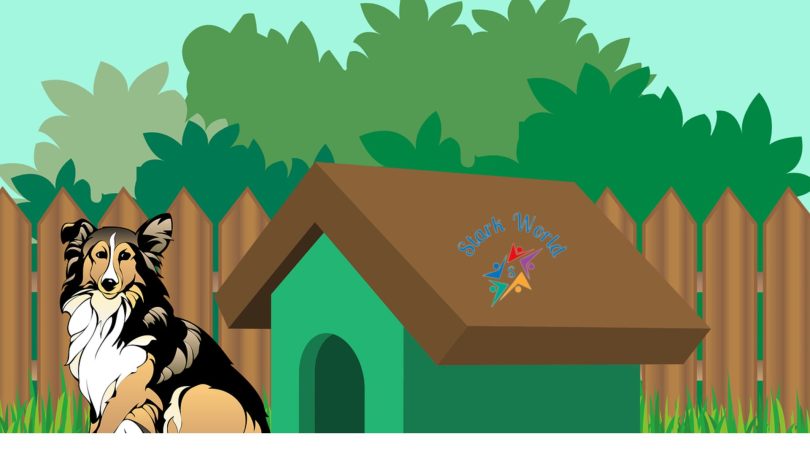Welcoming a furry friend into your home is a joyous occasion, but it also comes with responsibilities. Creating a pet-friendly environment is essential not only for the comfort and safety of your pet but also for maintaining a harmonious living space. Here are some tips to transform your home into a haven for your beloved companion.
Choosing Pet-Friendly Materials
When designing your home with pets in mind, consider materials that can withstand their presence. Opt for durable flooring like laminate, tile, or sealed hardwood that is scratch-resistant and easy to clean. Choose furniture made from pet-friendly fabrics like leather or microfiber, which are less prone to damage from claws or accidents. Additionally, research safe household plants to ensure they are non-toxic to your furry friends.
Designing a Safe Space
Create designated areas in your home where your pet can eat, sleep, and play comfortably. Use pet gates and barriers to restrict access to certain areas, especially those with potential hazards like stairs or fragile items. Invest in storage solutions for pet toys, food, and grooming supplies to keep your space organized and clutter-free.
Maintaining Cleanliness
Regular grooming routines are essential for keeping your pet and home clean. Brushing your pet’s fur regularly can reduce shedding and prevent mats, while regular baths can keep them smelling fresh. Clean up pet messes promptly to prevent stains and odors from setting in, and use pet-friendly cleaning products that are safe for both your pet and the environment.
Ensuring Safety
Pet-proofing your home is crucial to prevent accidents and injuries. Secure windows and doors to prevent escapes, and use childproof latches on cabinets containing potentially harmful substances. Keep toxic plants, foods, and chemicals out of reach, and consider investing in pet insurance to cover unexpected medical expenses.
Promoting Exercise and Mental Stimulation
Provide ample opportunities for your pet to exercise and engage in mental stimulation. Set up designated play areas with toys and scratching posts, and incorporate daily walks or play sessions into your routine. Interactive toys and puzzles can keep your pet entertained and mentally stimulated, reducing boredom and destructive behaviors.
Creating Comfortable Sleeping Spaces
Just like humans, pets need a cozy spot to rest and relax. Invest in a comfortable pet bed that provides adequate support and insulation, and consider adding blankets or pillows for extra comfort. Ensure the sleeping area is located in a quiet, draft-free space away from high-traffic areas to promote restful sleep.
Addressing Behavioral Needs
Understanding your pet’s behavior is key to addressing any issues that may arise. Use positive reinforcement training techniques to encourage good behavior and discourage undesirable habits. If your pet experiences separation anxiety, gradually acclimate them to being alone and provide comforting items like toys or blankets. Socialization with other animals and people is also important for preventing behavioral problems and promoting emotional well-being.
Incorporating Pet-Friendly Décor
You can integrate your pet’s belongings seamlessly into your home décor with stylish accessories and artwork. Choose pet beds and bowls that complement your existing furniture, and incorporate pet-themed decorations like framed photos or wall decals. Consider investing in durable, easy-to-clean materials that can withstand wear and tear from your furry friends.
Outdoor Considerations
If you have outdoor space, ensure it is safe and secure for your pet to enjoy. Install secure fencing to prevent escapes and provide shaded areas where your pet can cool off on hot days. Choose pet-friendly landscaping options that are safe for your pet to explore and avoid using chemicals or pesticides that could be harmful to their health.
Preparing for Emergencies
Being prepared for emergencies is essential when you have a pet. Keep a pet first aid kit stocked with essentials like bandages, antiseptic, and medications, and familiarize yourself with emergency vet contacts in your area. Have a plan in place for evacuating your home in case of natural disasters or other emergencies, and ensure your pet’s microchip and identification tags are up to date.
Getting Professional Help
If you’re unsure how to create a pet-friendly home or need assistance with training or behavior issues, don’t hesitate to seek professional help. Consult with veterinarians, trainers, or pet behaviorists for expert advice tailored to your pet’s specific needs. Consider hiring pet-friendly interior designers who can help you create a stylish and functional living space that accommodates your pet’s needs.
Budget-Friendly Tips
Creating a pet-friendly home doesn’t have to break the bank. Look for budget-friendly DIY projects to enhance your home’s pet-friendliness, such as building your own scratching posts or pet beds. Shop strategically for pet supplies, taking advantage of sales and discounts, and consider buying gently used items to save money. Utilize online resources and communities for tips and advice on how to create a pet-friendly environment on a budget.
Eco-Friendly Pet Living
For environmentally conscious pet owners, there are plenty of ways to reduce your carbon footprint while caring for your furry friends. Choose sustainable pet products made from eco-friendly materials, such as bamboo or recycled materials. Minimize pet-related waste by opting for biodegradable waste bags and eco-friendly litter options. Support eco-conscious pet brands that prioritize sustainability and ethical practices in their products.
Conclusion
Creating a pet-friendly home requires careful planning and consideration, but the rewards are well worth the effort. By choosing pet-friendly materials, designing safe spaces, and addressing your pet’s needs, you can create a comfortable and harmonious environment for both you and your furry friend to enjoy.
FAQs
- How can I prevent my pet from damaging furniture?
- Providing plenty of toys and scratching posts can redirect your pet’s natural behaviors away from furniture. You can also use deterrents like double-sided tape or citrus sprays to discourage scratching.
- What plants are safe to have around pets?
- Some pet-safe plants include spider plants, Boston ferns, and African violets. However, it’s essential to research specific plants as some can be toxic to pets if ingested.
- How do I introduce a new pet to my home?
- Introduce new pets gradually, allowing them to explore one room at a time and gradually introducing them to other pets in the household. Supervise interactions initially and provide plenty of positive reinforcement.
- What should I include in a pet first aid kit?
- A pet first aid kit should include essentials like bandages, antiseptic wipes, gauze pads, tweezers, and scissors. Additionally, include any medications your pet may need, along with a copy of their medical records and emergency contact information.
- How can I make my home more energy-efficient for my pet?
- Consider installing energy-efficient appliances and lighting to reduce your home’s carbon footprint. Additionally, you can use programmable thermostats to regulate indoor temperatures and minimize energy consumption when you’re away from home.







